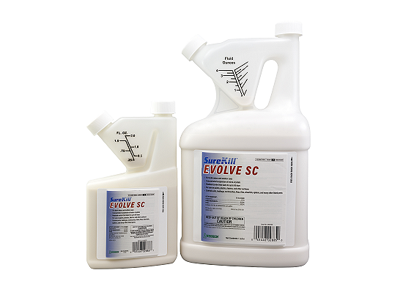
Understanding Your Targets:
Occasional invaders represent a broad category of unwanted pests that sporadically find their way into homes and other structures. Among the most commonly encountered occasional invaders are spiders, crickets, centipedes, pillbugs, silverfish, and clover mites. Often times, occasional invaders are initially attracted to light sources in homes or head inside to escape harsh weather conditions. In contrast to overwintering pests who seeking shelter for extended periods of time, occasional invaders more often than not enter spaces unintentionally. Bearing their habits in mind, this will aid you on helping you decide where, when, and how to treat.
Their Preferred Habitats:
Many occasional invaders tend to dwell in cool, damp, and undisturbed environments. These habitats include landscaping elements like mulch or rocks, as well as dense vegetation such as shrubs and bushes. Be mindful of areas with higher moisture levels, such as beneath rocks, within landscaping features, around piping, gutters, etc., as these conditions create a desirable living environment. When occasional
invaders find their way indoors, they tend to seek shelter in similar conditions near food and water sources.
Treatment and Preventative Measures:
Habitat manipulation and exclusion are both important to consider when treating occasional invaders as these two options are considered more permanent solutions. Properly sealing pipes, vents, dampers, and exterior openings is an important step to prevent reentry. Employ caulking or appropriate sealants to fill any cracks, crevices, or gaps. Inspect weather-stripping and window screens for damage and
recommend replacements as needed. By trimming bushes, trees, or grass that touch your structure, recommending insect-repelling flowers or herbs to customers can assist in reducing overall pest populations. Additionally, ensure that trash, debris, and yard waste are sealed and disposed of in appropriate containers.
It’s important to properly identify what occasional invaders you’re treating before beginning any chemical service. When performing exterior applications for occasional invaders, concentrate on window and door frames as these are the most common entry points into customers’ homes. Don’t overlook shutters, as many pests will take harborage here. Eaves and awnings also provide ideal shelter for many
insects to rest and avoid environmental pressures. If your service requires an interior treatment as well, focus on resting areas and harborages such as along/behind baseboards, behind kitchen appliances/furniture, around electrical conduits, attics, crawl spaces, or around any pipes leading into your home.
SureKill® Evolve SC: SureKill’s Newest Broad-Spectrum Solution
When PMPs are searching for a broad-spectrum insecticide that offers effective knockdown and long-lasting control of listed pests, enter SureKill Evolve SC. SureKill Evolve SC is a suspension concentrate insecticide designed for both indoor and outdoor use and provides extended residual control for up to 90 days, ensuring protection long after the initial application. Formulated with industry-trusted
deltamethrin as the active ingredient, it can be applied in and around buildings and structures, as well ason established landscape ornamentals around residential and commercial properties.
Check out SureKill Evolve SC and other great insect, rodent, and public health solutions here.
Read these products’ entire labels and follow all use directions, use restrictions, and precautions. Use only for the sites, pests, and application methods described on the product labels. It is a violation of Federal law to use these products in a manner inconsistent with their labeling.

